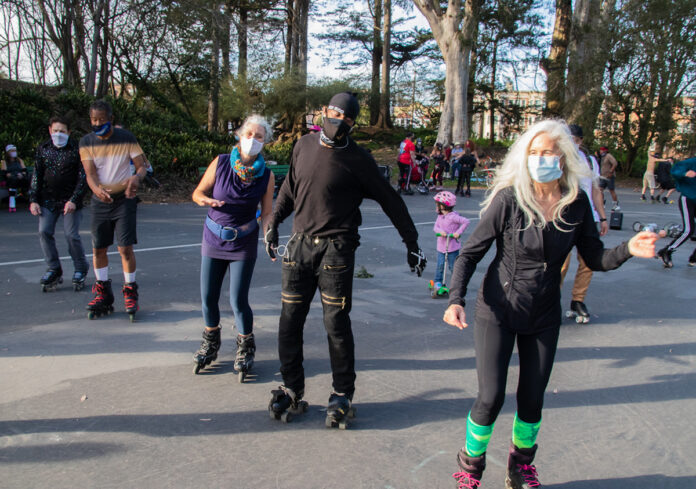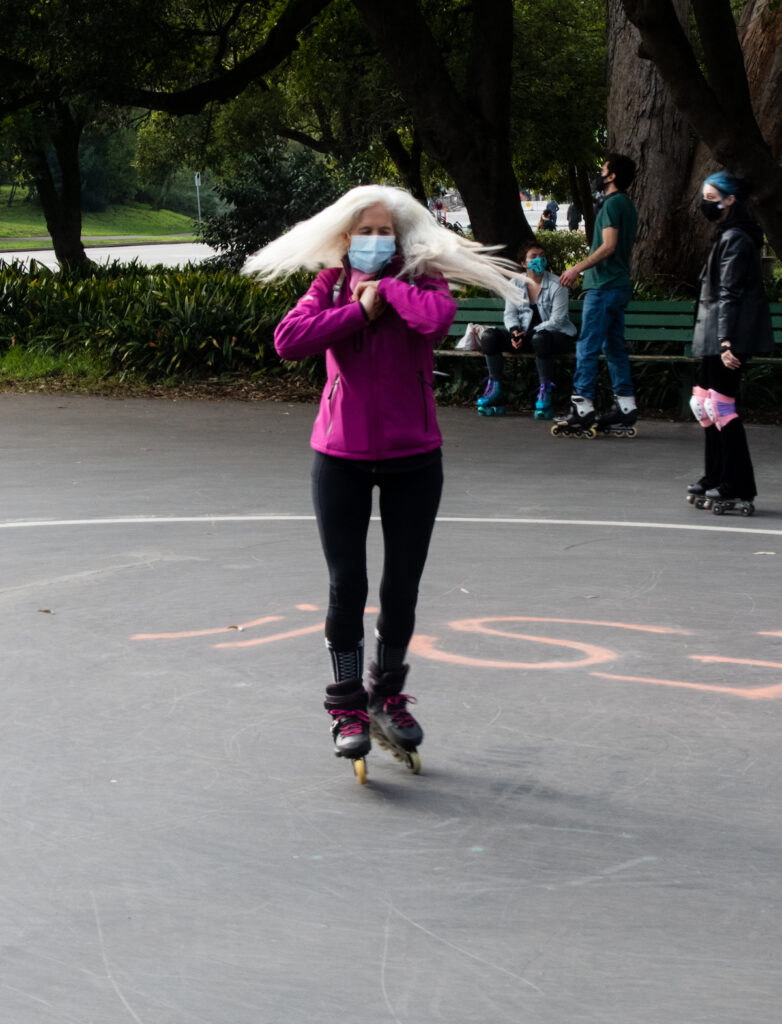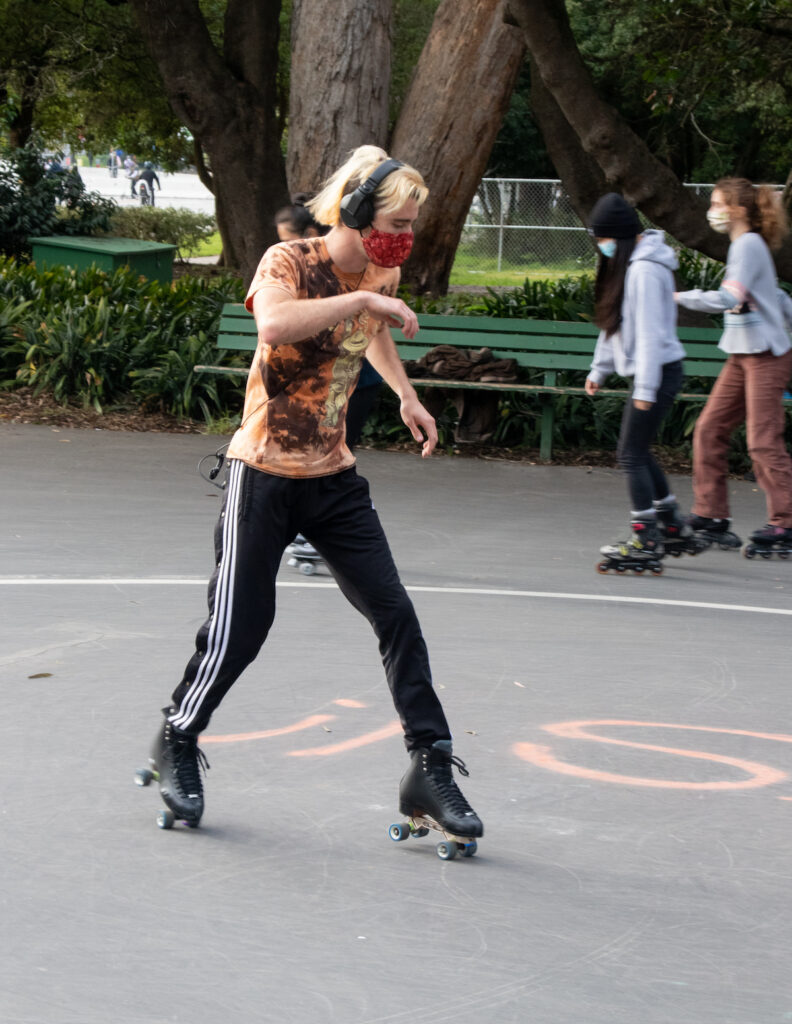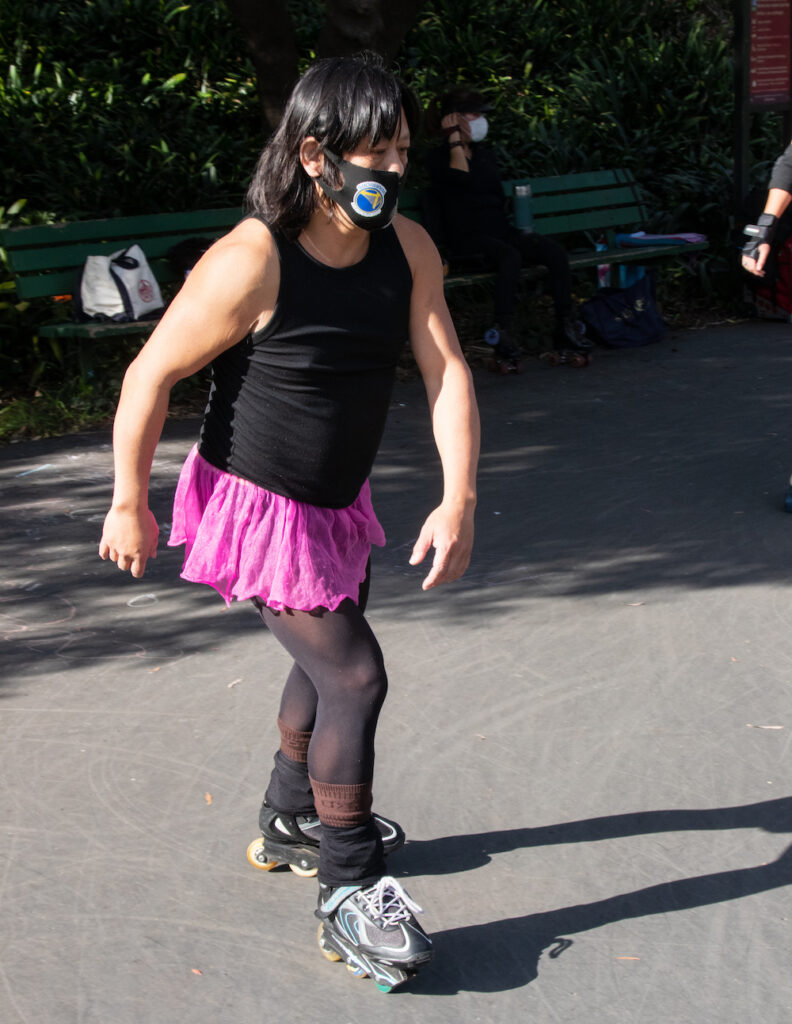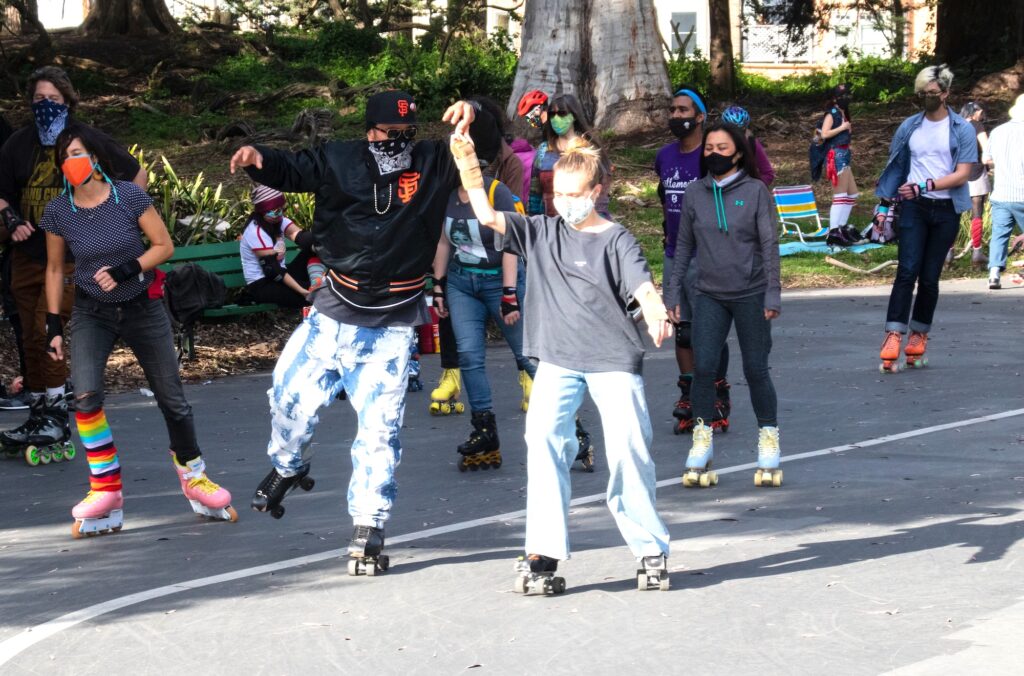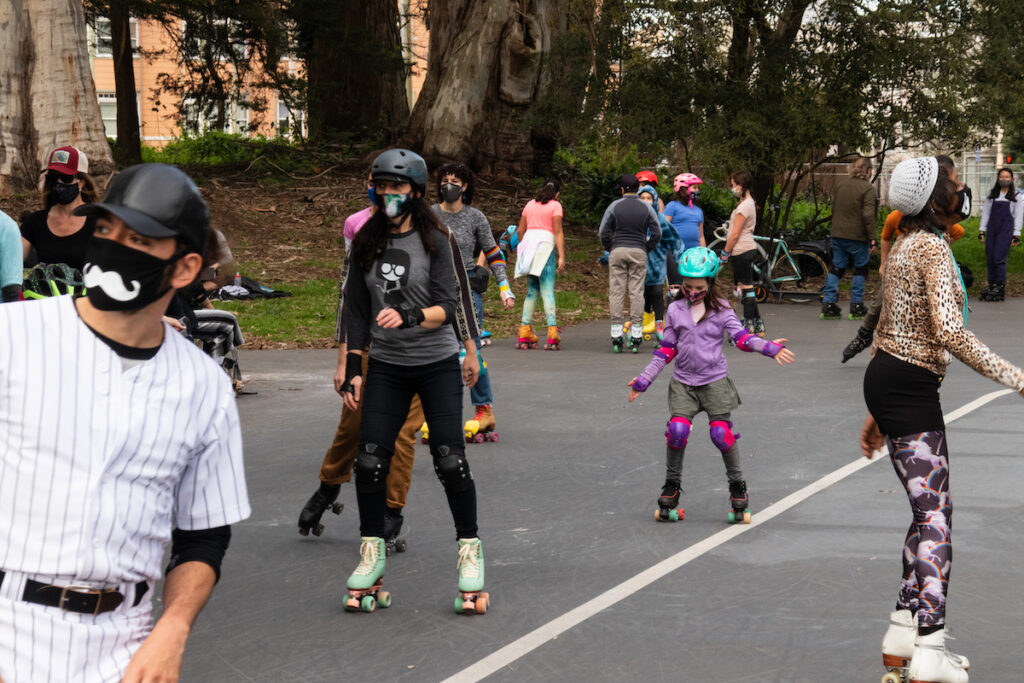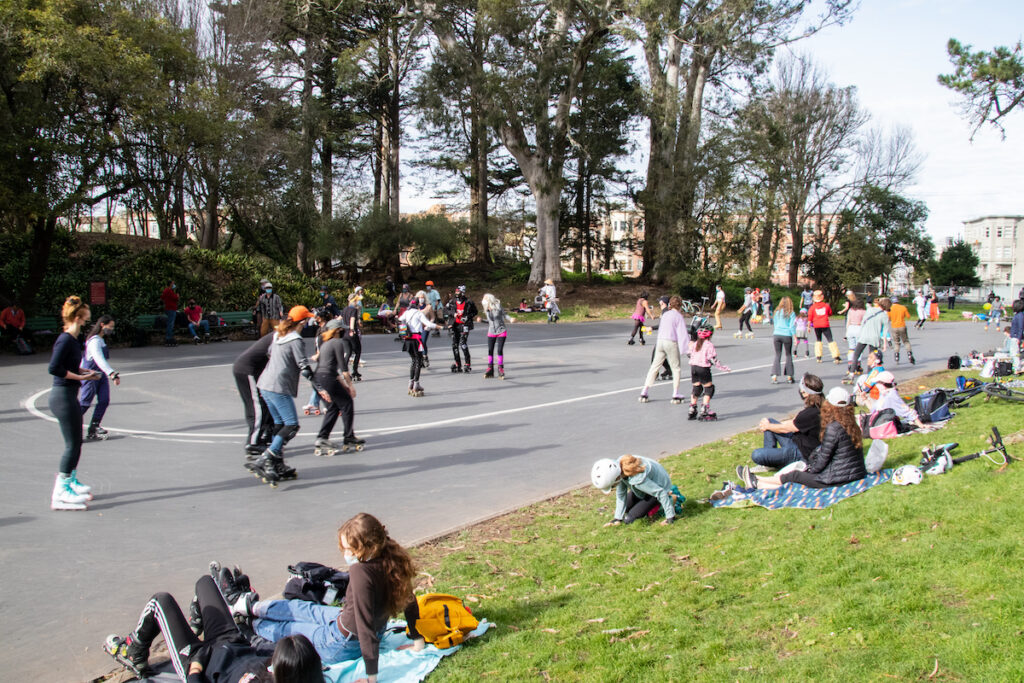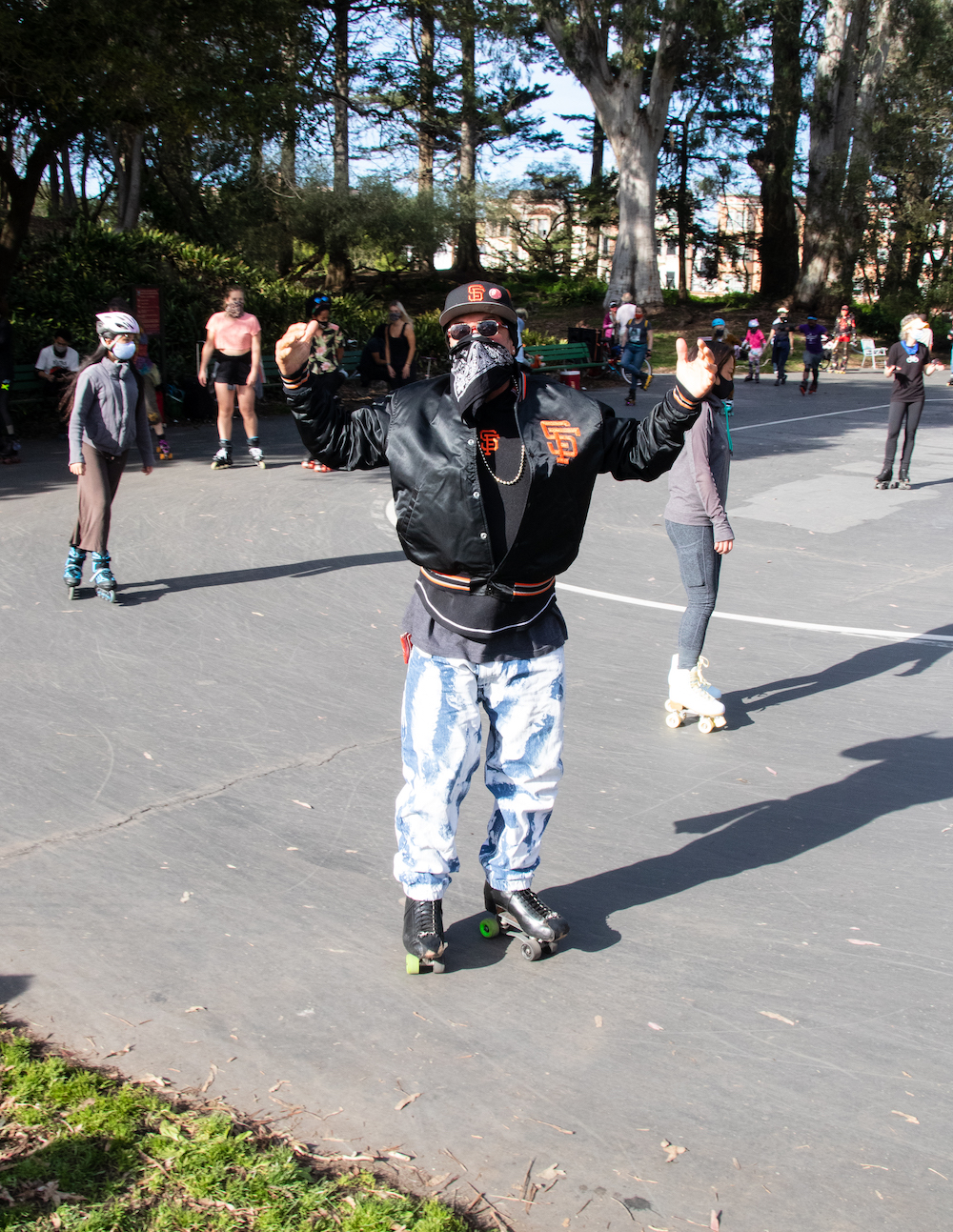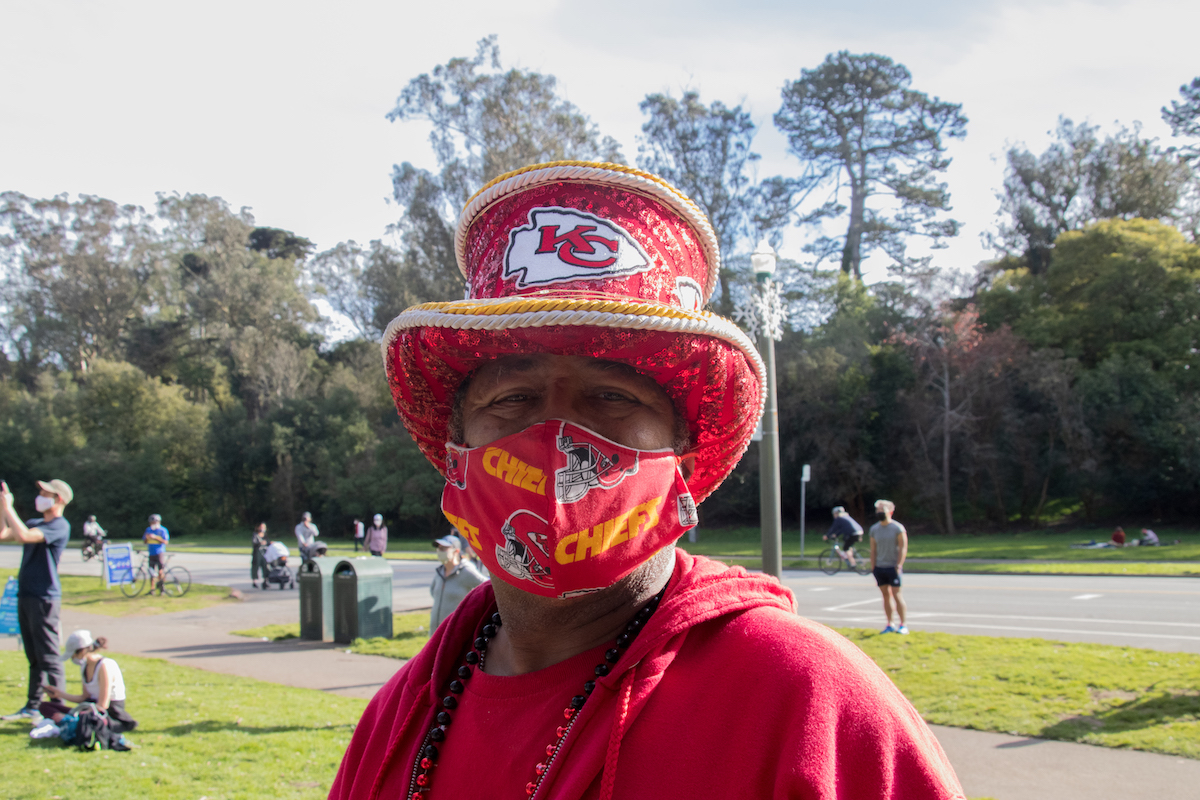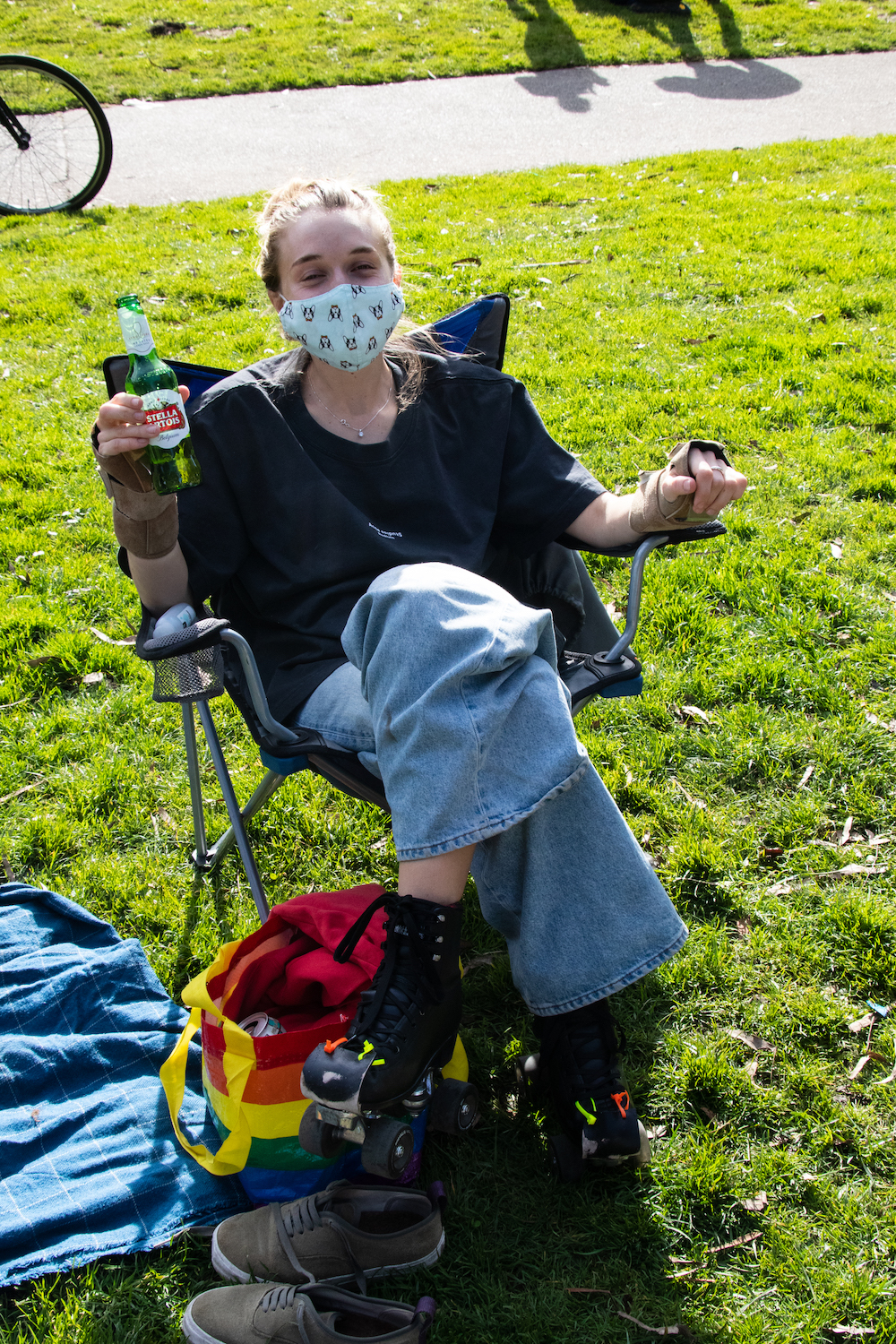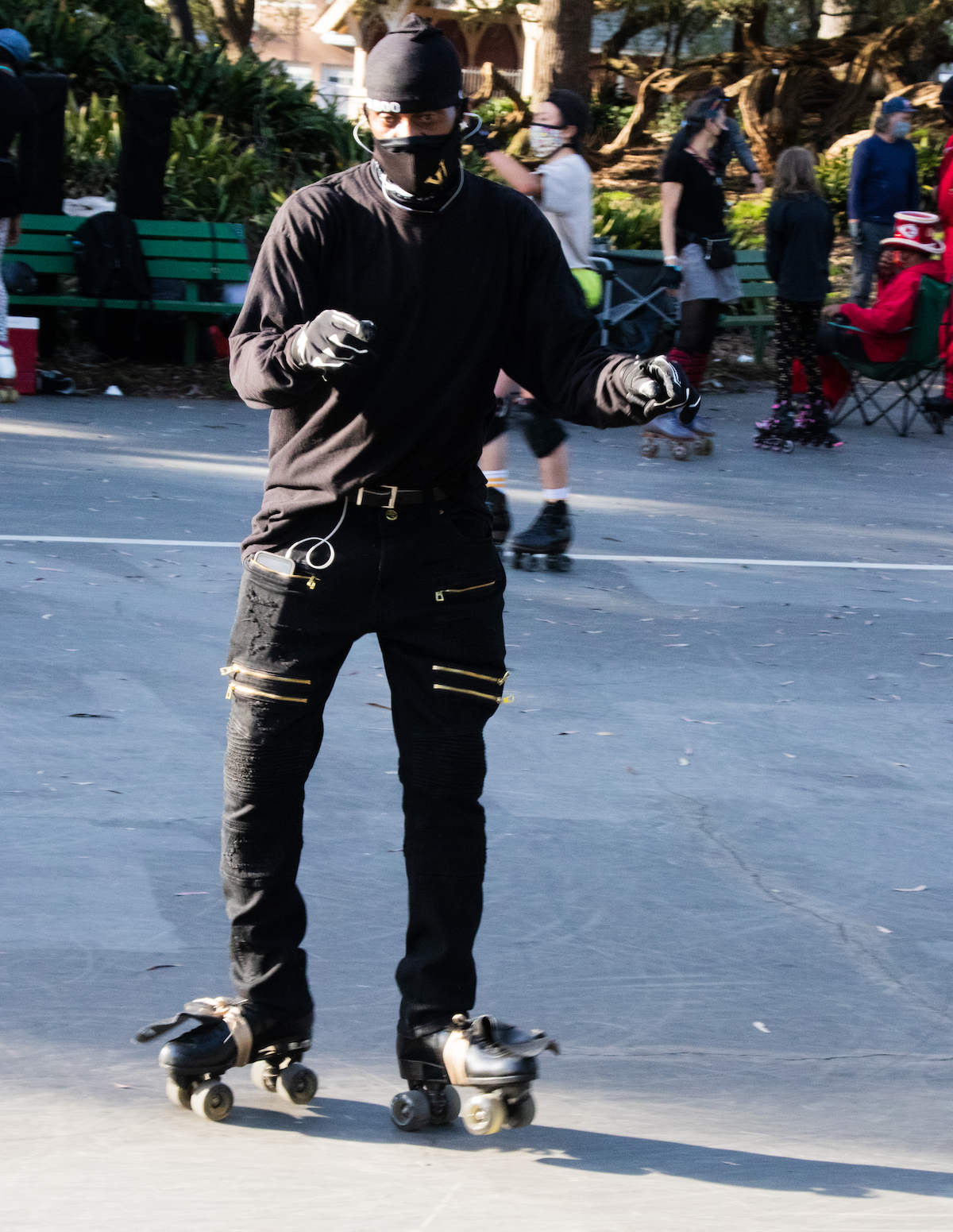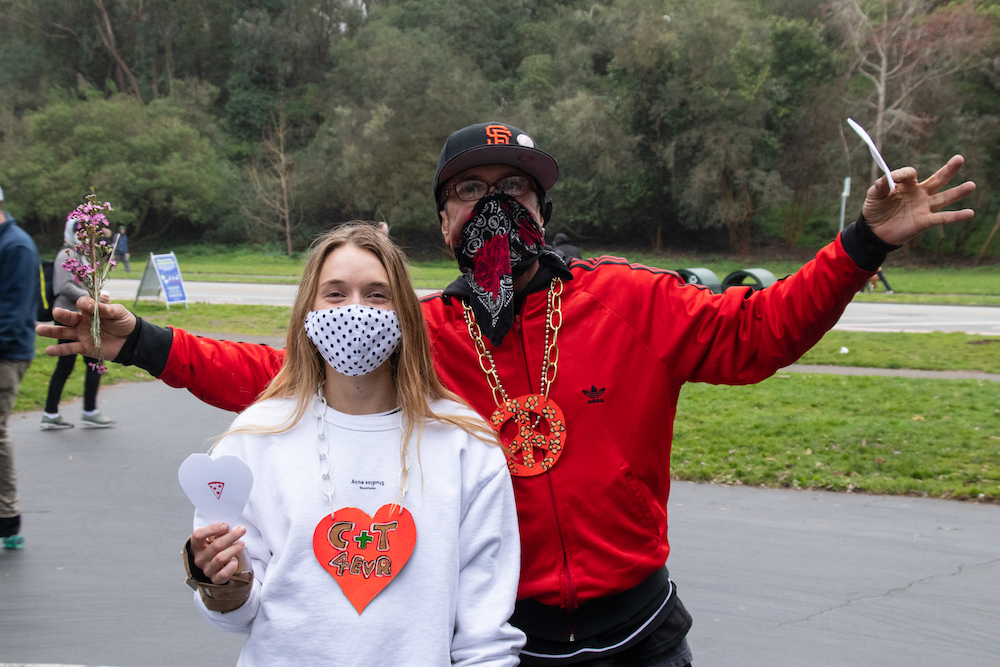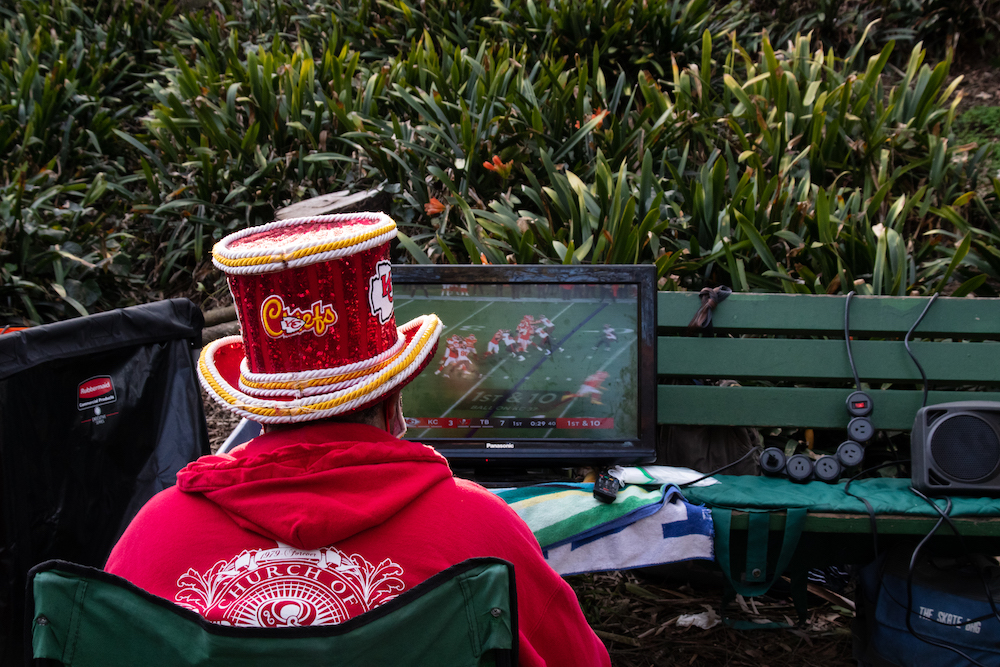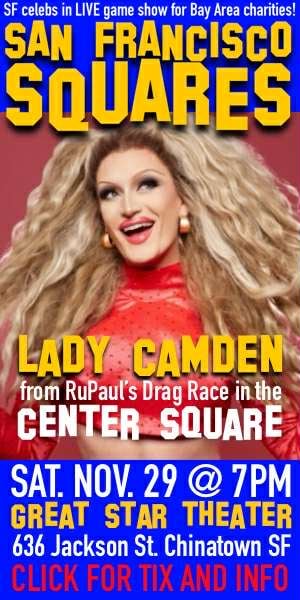WARREN FOCKE LIVES. The bright orange letters are ringed by a white oval and stand in contrast to the asphalt that defines the Skatin’ Place, San Francisco’s treasured outdoor skating rink along the northern edge of Golden Gate Park. It is exactly the kind of weird and whimsical place that can only exist here. Tucked between pine groves, the small paved spot serves as a haven from the troubles of the outside world. Besides the masks and the distance between the skaters, little evidence of the pandemic exists here. The slope is still covered with blankets and loose skates. Rollerskaters young and old, new and experienced, still race or jaunt or dance around the track to the soundtrack of funk, pop and hip-hop. The demographics of the rink are as eclectic as San Francisco itself. It is a judgment-free zone, which is good news for me and my somewhat unsteady and unconfident skating.
On any given day, there’s a decent crowd, but Sundays are when the magic happens. This unusually warm Sunday, the day before Martin Luther King Jr. Day, marked the return of the “Godfather of Skate” himself, David Miles, after an absence of several months. With his trademark microphone, he expressed his gratitude for the social distancing and mask-wearing on display, as well as explaining the mystery of the orange letters at the center of the rink: They are a tribute to his late friend, a downhill skater and former NASA astrophysicist that Miles describes as the smartest man he knew. He longs for San Francisco to drop to the orange tier, because that means his Church of Eight Wheels, the beloved indoor skate rink in a former Fillmore cathedral, can reopen. A Kansas City native, on Super Bowl Sunday he was decked out in Chiefs gear, and in the corner set a TV showing the game. He detailed the upcoming renovation: the rink will be painted with a mural (designed by Miles himself) and a lamppost set up on the northern side.
Besides Miles himself, the rink attracts a number of regulars, whose personal flair makes them hard to miss. There’s Colleen Jones, a Fresno native, skating here since 1999, who always wears pink and whose signature move is a quick, tight twirl. There’s the soft-spoken Angel, an immigrant from China, who’s been skating since 2012. He is balletic as he skates, and compliments that style with a skirt he wears over his pants, which he finds both practical and an eye-popping aesthetic.
Tito, or “T,” is very much not soft-spoken, wears a hand-painted denim jacket, and dances across the rink. T, a San Francisco native, has been coming since the inception of the rink 40 years ago, although he separates himself from the core founding group. He considers introducing yourself to him to be of paramount importance. Once you do, he’s an open book, and he regales me with stories of his skating career: Though he’s a recent retiree from the health department, he also regularly skated in music videos, or his life in San Francisco (when asked what neighborhood he grew up in, he responded simply “all over”). Justin Ried, a Sacramento transplant, has been coming for the last year and a half, and is “good friends” with Miles’ son. The dancing in the center of the rink is usually choreographed by Natalie, who shouts out the name and number of steps. She is often joined by her husband Daryl “Zee.”
The lockdown has led to an explosion of interest in rollerskating. Videos of rollerskating have become huge on TikTok, a fact several people bring up. In fact, relative newcomers dominate the rink. Manny Yekutiel, the owner of the eponymous café in the Mission, showed up in early January, having learned just a few days earlier more or less on a lark. Megan, who lives in the East Bay, only starting skating in August (inspired by said TikToks) but now does so every day. Some people are rediscovering the hobby from their childhood, such as San Francisco native Tara. For some of these newcomers, the hobby has quickly become an obsession. Claesine Lindberg, an art director from Sweden, was directly inspired by the older generation she observed in the park. She first got into skates in December and now skates every day, and already knows things it takes some many more months to master. She regularly dances across the rink with Tito. Miles is happy to see all the new faces, believing that “an entire generation missed out on rollerskating”.
The subculture of the Skatin’ Place is a difficult one to pin down. Despite the presence of identifiable regulars, the amorphous attendance day by day means it can’t be defined by those “in” and those “out”. It’s not defined by a common aesthetic—you can come as you are, or in your Sunday Best, or dress as a baseball player or a ninja. When describing the appeal of the Skatin’ Place, most people bring up the nature of the community itself. Yekutiel described it as a “joy vortex.” For Angel, it’s a place to work through whatever problems he’s facing, a sentiment backed up by Ried. “It doesn’t matter who you are or what you represent or what issues you’re dealing with, as long as you’ve got roller skates on, people want to be around you,” he said. He believes the social cohesion of the rink has not been affected by the pandemic. “If you don’t show up for four weeks in a row, people understand.” Despite being such a loose collective, the skaters do look out for one another: Megan describes a time some skaters chased away a cyclist harassing the Place.
Miles is optimistic about the present and future of rollerskating. The popularity of the sport is cyclical, he explained. “When things are bad, rollerskating thrives.” But in San Francisco, it’s different, as it always is. Here, it’s a “constant.” “San Francisco has a certain energy about it that lets stuff like this happen easier.” The future of rollerskating, he says, lies “outside”, specifically in malls that now found themselves empty of big tenants. The Skatin’ Place has been going strong since 1979, and there’s no indication it can’t weather this crisis. During the pandemic, when so many social bonds have been frayed, the Skatin’ Place is the one place they’ve stayed intact, maybe even grown stronger. It’s a place to escape the present, a place that captures the City in miniature. By offering a portal to our pre-pandemic life, and maybe even showing a glimpse of our post-pandemic future, it has proved its importance.

